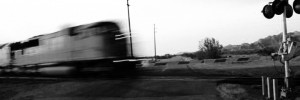Officials say train safety improvements helped prevent fatalities in early morning crash.

The scene was no doubt very frightening and confusing in the pre-dawn darkness with smoke billowing all around, but fortunately all 50 of the passengers were able to escape with their lives. However, 28 of the passengers were rushed to local hospitals with serious injuries including broken bones, head injuries, back injuries, and neck injuries. Four of the passengers are reported in critical condition.
The driver of the truck, who was unharmed, reported that he had miscalculated a turn at a railroad crossing near Oxnard and ended up with his truck and 12-foot trailer stuck in the path of an oncoming train. The driver was found more than a mile from the site of the accident, reportedly having left the scene to call 911. The driver is cooperating with police.
Officials are conducting an investigation to evaluate the performance of existing train safety practices determine what safety improvements could be made to help prevent future accidents.
For example, officials report that the new Rotem train cars, which were ordered after a deadly train accident about 10 years ago, performed exactly as promised. These train cars are designed to help absorb and deflect the impact of a crash away from passengers to minimize injury. According to a member of the Metrolink board, the accident could have been much worse without these new cars.
However, there are questions about other safety practices in place on Metrolink trains. Specifically, concerns have been raised about the practice of having the commuter trains powered by a heavy locomotive engine at the back of the train and controlled by a lighter engineer car at the front. Some safety experts believe that keeping the heavier cars at the front may help trains push through obstacles on the tracks without derailing. However, placing the locomotive cars at the front could increase the risk of fire due to leaking fuel.
Another question has to do with the signals at the crossing where the accident occurred. This crossing was equipped with flashing lights, bells, and gate arms that activate when a train is a quarter of a mile away. However, it takes between a quarter of a mile and half a mile for a commuter train traveling 65 miles per hour to stop. Though the engineer did pull the emergency brake quickly in this case, the train simply did not have enough track to stop before hitting the truck—and may have been out of track even before the gate arms went down.
While learning from the mistakes of the past in order to prevent future accidents and injuries is important, this by no means signals that we don’t need to take care of today’s victims. If you or a loved one has been seriously injured in a train accident, you may be entitled to compensation. Please contact The Law Offices of Michael A. Kahn to learn more.

